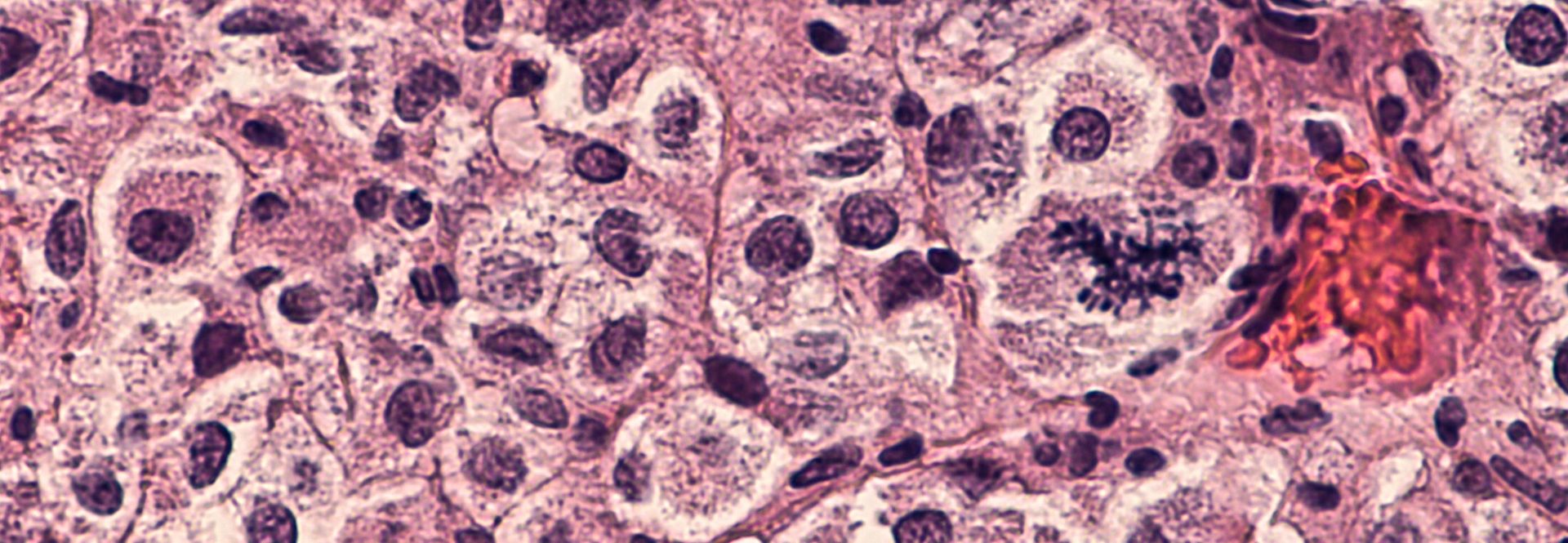

ROS Detection Tumor
‘Radical’ Inhibitor Targets Tumor Oxygen Supply
Reactive oxygen and nitrogen species have emerged as important endogenous regulators of angiogenesis (blood vessel growth), which can contribute to the growth of cancers. Reactive oxygen species (ROS) include superoxide ions and hydrogen peroxide. NADPH oxidases, the mitochondrial respiratory chain, and endothelial NO-synthase (NOS) are all major sources of reactive oxygen species that lead to endothelial dysfunction in the cell. Nitric oxide regulates the cell’s response to metabolic stress and low oxygen tension. NO-synthase catalyzes the production of nitric oxide from L-arginine.
The family of NO-synthases perform a range of functions in the body, including maintenance of vascular tone, secretion of insulin, peristalsis, and angiogenesis. Nitric oxide and ROS create a balance between oxidation and reduction in healthy cells. However, in some cancerous cells, nitric oxide promotes tumor growth and metastasis. NADPH oxidases and endothelial NO-synthase are therefore targets of interest in pharmaceutical development for cancer and cardiovascular disease.
Each molecule of NO-synthase contains an N-terminal oxygenase domain and a multi-domain C-terminal reductase. Within the oxygen domain, there is a heme-a ferrous iron contained within a porphyrin ring. NOS inhibitors are usually designed to target the heme site within the oxygenase domain of the molecule. Those inhibitors don’t prevent ROS formation in the reductase domain. A drug targeting the reductase domain would inhibit ROS production as well as the formation of NO.
Researchers based in France and Belgium designed a novel probe they named a nanoshutter (NS1) that can bind to NOS at its NADPH binding site in the reductase domain of the molecule. (Rouaud et al. 2014) NS1 inhibits formation of NO by competing with NADPH at the binding site. Binding activates fluorescence in NS1, allowing imaging of endothelial NOS in live cells.
They found that NS1 inhibited formation of NO produced in aortic rings in mice, inhibited VEGF-dependent angiogenesis of human umbilical vein cells (HUVECs), and inhibited hydrogen peroxide and superoxide formation under uncoupling conditions.
The scientists used a Bruker X-band EPR spectrometer to detect superoxide anion and determined that NS1 decreased the EPR signal by 80 percent. The EPR data supported NS1 inhibition of superoxide ions created by membrane bound enzymes, in agreement with another experiment showing ROS inhibition in HUVECs as determined by fluorescent probe.
The group tested whether NS1 affected ROS in metastatic melanoma cells by using the same fluorescent probe technique, showing ROS levels were unchanged. That suggests that ROS were not produced by uncoupling of the heme domain of NOS. However, NS1 reduced proliferation of melanoma cells in a dose-dependent manner without affecting healthy melanocytes. NS1 also exhibited anti-angiogenic effects.
They concluded that targeted inhibitors of NOS like NS1 could disrupt the oxidation-reduction balance between a tumor and its environment, reducing angiogenesis, and leading to a “normalization” of the tumor blood vessels. The mechanism of this effect has not yet been identified.